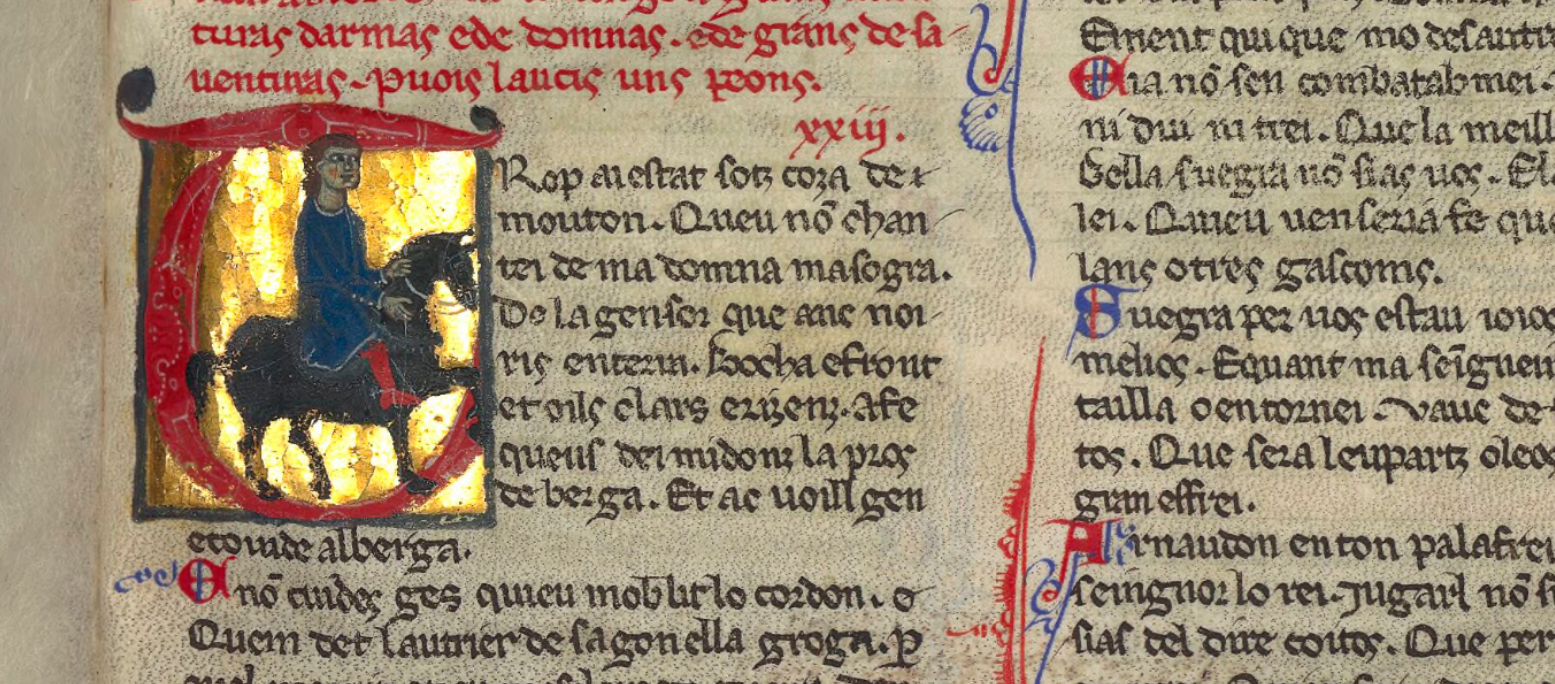
Posted by Edward Mills
25 March 2017The Medieval Research Seminar has been particularly active of late. Hot on the heels of Anne Lawrence-Mathers’ fascinating discussion of medieval magic and Sarah Hamilton’s insight into reading and understanding rites, we were very fortunate to play host, on 10 March, to Miriam Cabré. Miriam works at the Universitat de Girona, Catalonia, and has published widely on courtly cultures of medieval Occitania and on the troubadours more broadly. Miriam’s presentation was entitled ‘Literary landscapes and real itineraries: The reasons for mapping the troubadours’. Her paper offered an insight into her latest project, which explores the role played by the troubadours in a broader pan-European culture, while focusing specifically on one particular aspect of her research: attempts to ‘map’ the networks of production and patronage of these works and poets in the twelfth and thirteenth centuries.
Maps, as Cabré noted, are powerful tools in the hands of literary scholars, and have formed the front-matter of many an introductory text on the subject of troubadours. The production and use of any map, however, is fraught with implicit choices, which can have an important impact on how the works that they accompany are represented. Should the ‘boundaries’ of the map, for instance, represent borders of a linguistic or a political variety? In the context of the troubadours, how should maps represent the relative political importance of individual regions, or individual courts? Many maps (re)produced as front matter to troubadour anthologies ignore Catalonia entirely, and focus totally on the south of modern-day France: what is gained (or lost) through this decision?
Cabré outlined some of the opportunities that her project presents, particularly in emphasising the role of Catalan courts within the broader realm of Occitania. The map being produced by her team, she explained, will be digital: built from the ground up, it will use dynamic ‘layers’ to represent the movements of the troubadours’ courtly patrons, the activity of individual troubadours themselves, and key topographical features as they affected movement and literary production. Miriam offered an advance ‘sneak peek’ of some early builds of her map, demonstrating how useful it will be in visualising the itineraries and disparate geographical references implicit in works by troubadours such as Guillem de Berguedà. She presented an extract from Guillem’s Be·m volria q’om saupes dir (‘I wish someone would tell me …’), replete with place-names, as a particularly compelling example of the insights that this kind of mapping can offer:
Ja·N Ponz Ugz no·s lais adurmir,
qe segurs es q’om li deman
Rochamaura, qe fai bastir,
e la forza de Carmenzon;
e·ls murs q’a faitz a massa gran
lo reis los fara desrochar,
e·ls vals de Castellon razar.
[‘Let Sir Pons Uc not slumber, / For it is certain he will be asked to hand over / Rocamaura, which he had built, / And the stronghold of Carmenzon; / And the king will tear down / The thick walls walls he has had built / And raze the valley of Castellon.’]
Maps, as recent endeavours such as Medieval Francophone Literary Cultures Outside France have shown, can be powerful tools in helping researchers to appreciate the physicality of the literatures that we study. As Cabré’s Troubadours and European Identity: The Role of Catalan Courts project will aim to demonstrate, maps remind us that texts such as those contained in troubadour chansonniers were, ultimately, products of a particular time and place, composed in the context of specific geopolitical events. As Miriam herself explained, the broad scope of her project is reflected in the composition of the project team, which includes specialists in multiple disciplines and benefits from a healthy variety of approaches. The intersection between disciplines of ‘medieval studies’ was reflected in the audience for the talk itself, which boasted a healthy attendance of both literary scholars and historians.
All of us at the Centre for Medieval Studies would like to offer our thanks to Miriam for a fascinating and thought-provoking presentation, which certainly gave us all an opportunity to reflect on the potential of digital and multidisciplinary approaches for our own research. Miriam’s visit was organised by Dr. Thomas Hinton, a lecturer in French at Exeter who himself specialises in medieval Occitan (and who, in the true spirit of interdisciplinary research, provided the translations for this blog post).
Cover image: Guillem de Berguedà. Image from Paris, BnF, MS français 12473, fol. 178r.